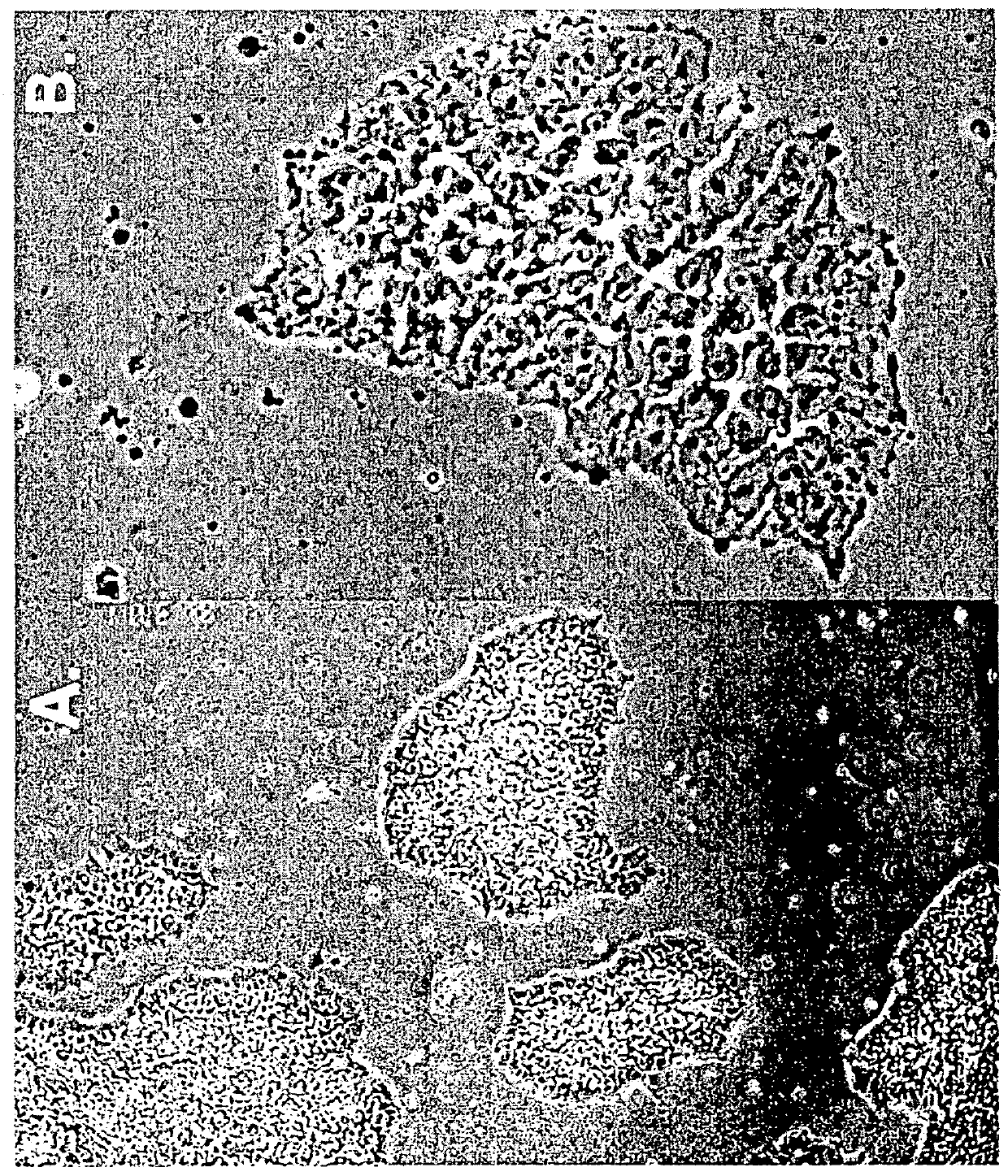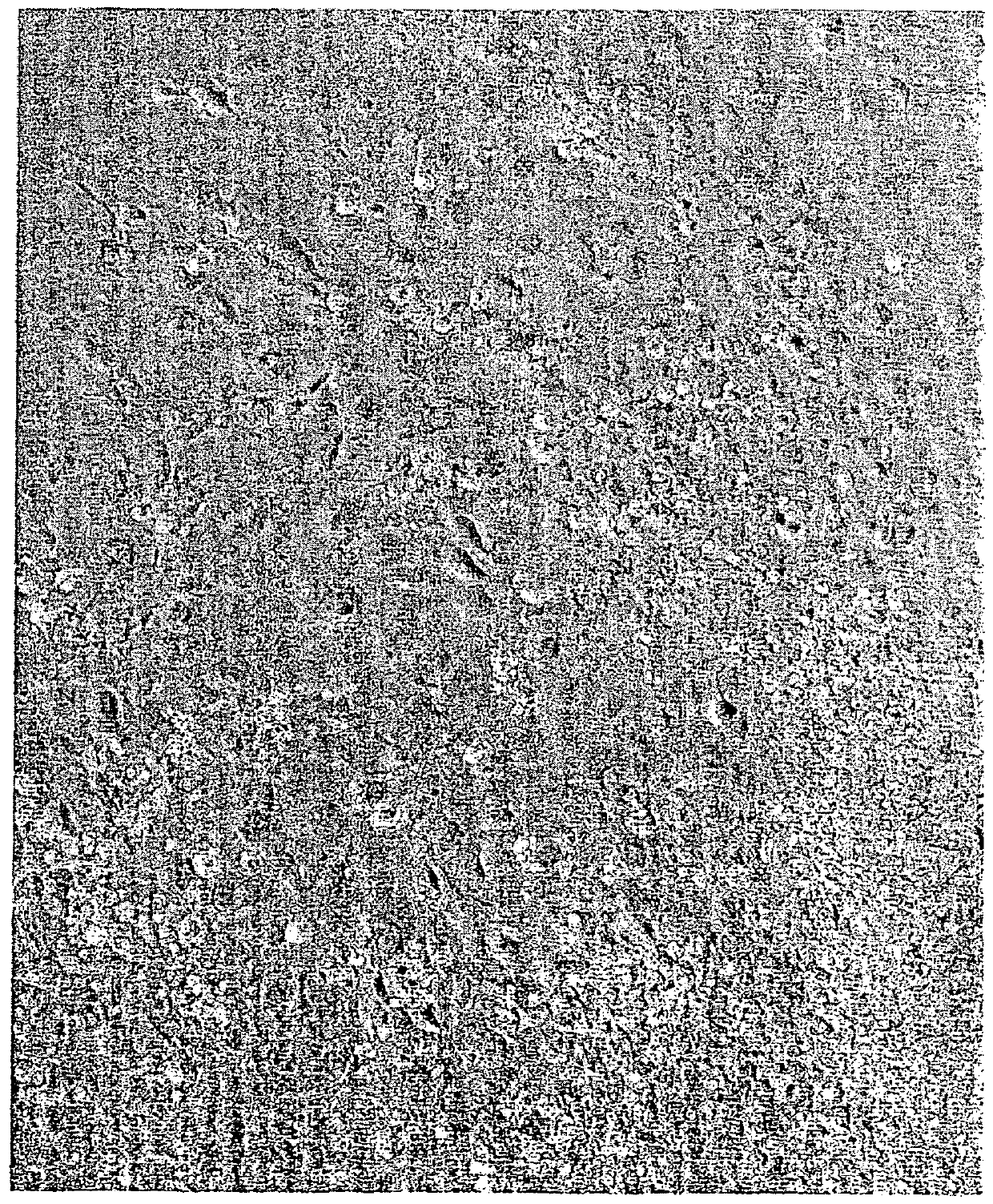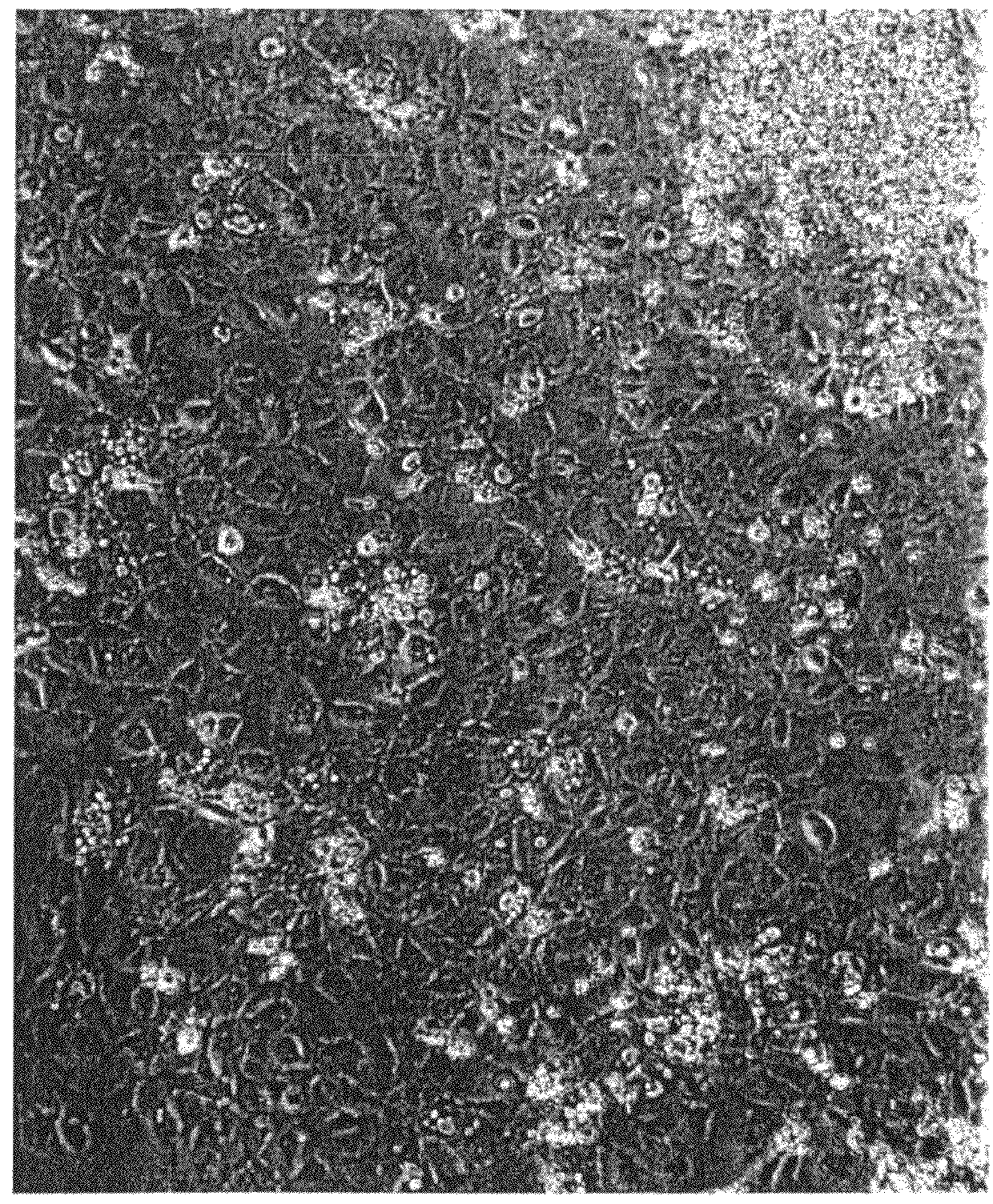Differentiating ES cells using a tenascin
a technology of tenascin and differentiation cells, which is applied in the field of in vitro culture and differentiation of totipotent, nearly totipotent, and pluripotent cells, can solve the problems of incompatibility, availability and inability to meet human needs, and both morally unacceptable and practicable human therapy
- Summary
- Abstract
- Description
- Claims
- Application Information
AI Technical Summary
Benefits of technology
Problems solved by technology
Method used
Image
Examples
example 1
Conditioning Totipotent Stem Cells to Grow and Maintain an Undifferentiated State in the Absence of Feeder Cells:
[0153]ES-like cells derived from the inner cell mass of parthenogenetic Cynomologous monkey embryos, Cyno-1 were originally cultured on mitotically inactivated mouse embryonic fibroblast derived from D12 fetuses (strain 129).
[0154]The culture media was:
[0155]
DMEM (High Glucose) (Gibco # 11960-044)425mlFetal Calf Serum (Hyclone)75mlMEM non essential AA x100 (Gibco #11140-050)5mlL-Glutamine4mM2-mercatoethanol (Gibco #21985-023)1.4ml
[0156]The cells were passaged mechanically every 4 to 5 days.
[0157]To condition the cells to grow in the absence of feeder cells to improve the screening assay, the cells were passaged mechanically into a non-coated Polystyrene cell culture plate (Corning)
[0158]For the first two days, cells were cultured in conditioned media from the original cultures (described above)
[0159]On day three, conditioned media was replaced by:
[0160]Human Endothelial-S...
example 2
Screen Using Primate ES-Like Cells and Analysis by Microscopy and RT-PCR:
[0165]Approximately 105 ES-like stem cells from parthenogenetic monkey embryos (Cyno-1FF cell line, see Example 1) were plated in duplicate 24 well plates in the presence of mouse embryonic fibroblast-conditioned medium for two days. The media was then aspirated and replaced with DMEM medium with 15% fetal bovine serum, added nonessential amino acids, 5×10−5 M β-mercaptoethanol, 2 mM L-glutamine, 100 μg / ml penicillin, and 100 μg / ml streptomycin. The cells were then cultured in the presence of growth factors or cytokines in order to direct their differentiation. Working stock solutions of the cytokines were prepared in 0.1% bovine serum albumin (BSA) in phosphate-buffered saline (PBS). Diluted cytokines were applied on Day 0. To each well, 7.5 μl of diluted factor was added from the working stock solutions to obtain the following final concentrations:[0166]VEGF-A (165 kDa) (R&D Biosystems cat #293VE) was used at...
example 3
Screen Using Primate ES-Like Cells and Analysis by Immunocytochemistry:
[0228]The presence of products of the expression of cell type-associated genes in Cyno-1FF cells exposed to putative differentiation-inducing agents in one of the 24 well plates prepared according to Example 2 was detected by immunocytochemistry (ICC).
Solutions for Immunocytochemistry:
[0229]Fixative: 4% Paraformaldehyde
[0230]Permeabilization Solution: DPBS+1% TritonX-100
[0231]Blocking Solution: DPBS+150 mM glycine+3 mg / ml BSA
[0232]Rinsing Solution: DPBS+0.1% Triton X-100
[0233]Antibody Diluent: DPBS+0.1% Triton X-100+3 mg / ml BSA
General Protocol for Immunocytochemistry:
[0234]Rinse cells in DPBS (with Ca / Mg so cells do not dissociate) 3×.[0235]Add 4% Paraformaldehyde, Incubate at RT for 20-30 min.[0236]Remove fixative with a Pasteur pipette and wash 3× with PBS. At this point cells can be stored at 4 C for long periods of time if wrapped in parafilm.[0237]Add blocking solution and incubate at RT for at least 1 hour ...
PUM
| Property | Measurement | Unit |
|---|---|---|
| concentration | aaaaa | aaaaa |
| concentration | aaaaa | aaaaa |
| concentration | aaaaa | aaaaa |
Abstract
Description
Claims
Application Information
 Login to View More
Login to View More - R&D
- Intellectual Property
- Life Sciences
- Materials
- Tech Scout
- Unparalleled Data Quality
- Higher Quality Content
- 60% Fewer Hallucinations
Browse by: Latest US Patents, China's latest patents, Technical Efficacy Thesaurus, Application Domain, Technology Topic, Popular Technical Reports.
© 2025 PatSnap. All rights reserved.Legal|Privacy policy|Modern Slavery Act Transparency Statement|Sitemap|About US| Contact US: help@patsnap.com



